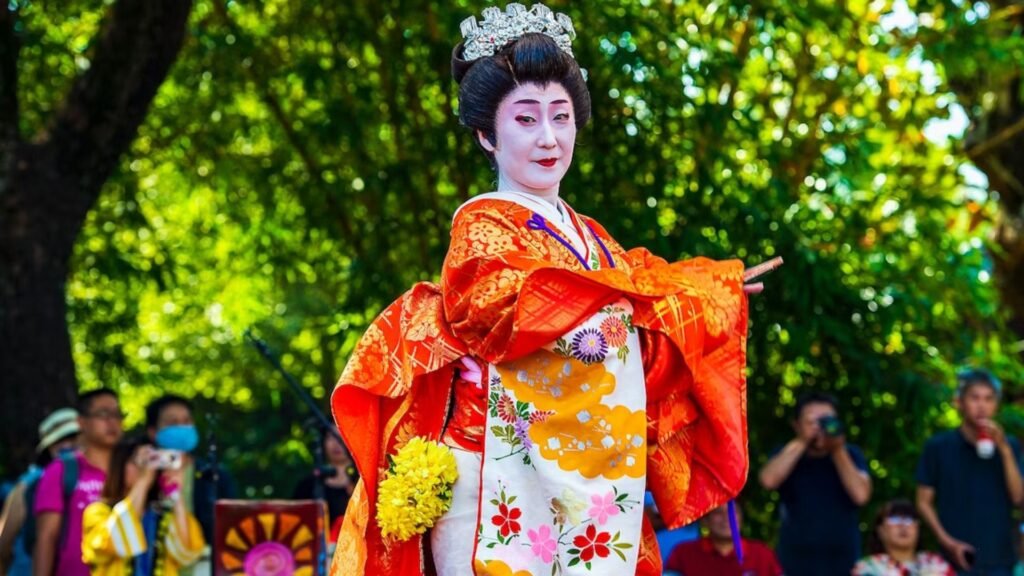A Guide to Traditional Japanese Festivals
Japan is renowned for its rich cultural heritage, and traditional festivals play a significant role in celebrating this vibrant culture. These festivals, or “matsuri,” are not only colorful and lively but also deeply rooted in historical and cultural traditions. Here’s a guide to some of the most notable traditional Japanese festivals, each offering a unique glimpse into Japan’s diverse cultural landscape.

The Importance of Matsuri in Japanese Culture
Traditional Japanese festivals are more than just events; they are deeply intertwined with the cultural and spiritual fabric of Japanese society. Matsuri typically involve elaborate rituals, historical reenactments, and communal activities that celebrate various aspects of Japanese life, from the changing seasons to religious deities. These festivals offer a sense of community, continuity, and connection to the past.
Notable Traditional Festivals in Japan
1. Gion Matsuri (Kyoto)
Held every July in Kyoto, the Gion Matsuri is one of Japan’s most famous and historic festivals. The festival features grand processions of beautifully decorated floats known as “yamaboko,” which are paraded through the streets of Kyoto. The event is a celebration of Kyoto’s heritage and includes traditional music, dance, and performances.
2. Tanabata Matsuri (Sendai)
The Tanabata Matsuri, or Star Festival, takes place in Sendai in early August. The festival is inspired by the ancient Chinese legend of two stars, Orihime and Hikoboshi, who are allowed to meet once a year. During Tanabata, streets are adorned with colorful streamers, paper decorations, and bamboo crafts, creating a festive and whimsical atmosphere.
3. Sapporo Snow Festival (Sapporo)
Held every February in Sapporo, Hokkaido, the Sapporo Snow Festival is a winter spectacle featuring massive ice and snow sculptures. The festival attracts visitors from around the world who come to admire the intricate designs and enjoy various winter activities, including snow slides and snowball fights.
4. Awa Odori (Tokushima)
The Awa Odori is a lively dance festival held in Tokushima Prefecture during August. It features traditional folk dancing known as “Awa Odori,” where participants dance to the rhythm of traditional music. The dance is known for its energetic and spontaneous nature, with both locals and visitors joining in the festivities.
5. Nebuta Matsuri (Aomori)
The Nebuta Matsuri, held in early August in Aomori, is renowned for its vibrant, illuminated floats depicting mythical figures and historical scenes. The festival features energetic parades, traditional music, and dancing, creating a captivating and festive atmosphere that attracts crowds from across Japan.
Festival Experiences and Traditions
Street Parades and Floats
Many traditional Japanese festivals feature impressive street parades and floats, often adorned with intricate designs and vibrant colors. These floats are typically carried or pulled through the streets by festival participants and are a central highlight of the celebrations.
Traditional Clothing
Participants and visitors often wear traditional Japanese clothing, such as yukata (casual summer kimonos) or happi coats (festival coats), adding to the festive ambiance. Wearing traditional attire allows individuals to immerse themselves fully in the cultural experience.
Food and Refreshments
Festivals are also an opportunity to enjoy a variety of traditional Japanese street foods and snacks, such as takoyaki (octopus balls), yakitori (grilled skewers), and cotton candy. Food stalls are a common feature at festivals, providing a chance to sample local delicacies.
Rituals and Ceremonies
Many festivals include religious or ceremonial aspects, such as prayers, offerings, and rituals to honor deities, spirits, or ancestors. These ceremonies reflect the spiritual significance of the festival and offer insight into Japanese religious practices.
Conclusion
Traditional Japanese festivals are a vibrant expression of Japan’s cultural heritage, blending history, spirituality, and community celebration. From the elaborate floats of Gion Matsuri to the illuminated creations of Nebuta Matsuri, each festival offers a unique and immersive experience. Participating in these festivals provides a deeper understanding of Japanese culture and a chance to celebrate alongside locals in a joyous and festive atmosphere. Whether you’re interested in ancient rituals or modern celebrations, Japanese festivals offer something for everyone to enjoy and appreciate.



